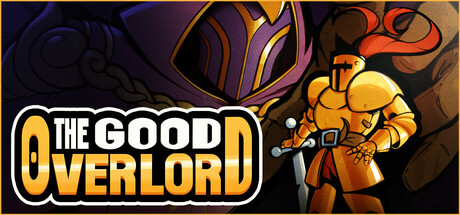(Aka Abstraction Theory but that isn't as funny)
So, I've been doing a lot of thinking on the Undertale and Deltarune meta, now that the game is less than two months from release, and I think I've got a good way of thinking about the world: as a series of layers, not unlike an onion. Well, more like how the Earth has layers, but like I said, Onion Theory is funnier.
Getting to the very bottom of it:
Layer 0: The Code
The code is the deepest foundational layer of the utdr universe, functioning similar to tectonic plates. It's also a literal thing, like saving and loading are actual, in-universe things. There isn't much to elaborate on here, but it comes up later, I promise.
Layer 1: Dark Worlds
So Deltarune is a game, similar to the way Undertale is a game, but dissimilar to how, say, The Last of Us is a game. You know why: you can play The Last of Us aggressively, passively, die once, die a thousand times, have ten saves or a thousand, and it has no impact on the actual characters, because those occurrences don't actually exist within the world. Unlike Undertale and Deltarune, where those things very much do exist. And it seems pretty clear with the way chapters are going, Dark Worlds are meant to represent escapism. Chapter 1 revolves around old toys and trinkets lost in an old school closet, Chapter 2 about the internet and technology, and it's nearly certain Chapter 3 will have a TV theme.
Given these things, it's reasonable to consider Dark Worlds to be an escape from Light Worlds: more simply, games within games. They take place in several layers of abstraction, but just above the code, which would be considered total abstraction.
Layer 1.5: Undertale
This is when it starts to get convoluted. Undertale, on the abstraction scale, would be between the Dark and Light Worlds within Deltarune.
The Underground doesn't seem to represent escapism. In universe it's a real place, beneath a real mountain, and the freeing of the monsters has real consequences in the world. I'm putting it in between Dark Worlds and Light Worlds because of the differences in mechanics. Save points, and therefore save files exist in both Dark Worlds and Undertale, but not in Light Worlds (in fact, Mr. Fox was resistant to have save points in the Light World, likely for a reason).
Several characters in Undertale seem to be able to recognize that they're in a game. Flowey being a main character guilty of this, but also Sans and Asgore can recognize that you've been in certain situations multiple times. Alphys has an interesting role to play here as well, but I'll elaborate on that in a second post. Several characters remark on how familiar you are upon a second playthrough, implying that they're further abstracted than those within the Light World. They recognize you, because on some level, they're closer to the code-- closer to total abstraction.
Layer 2: Light Worlds
To my knowledge, those who reside in the Light World have no understanding that they're in a game. They would not consider themselves one note NPCs. They have rich inner lives and backstories, that are continuing with or without player input. Different from those in the Dark World, who are based off specific things (decks of cards, chess pieces, internet ads, etc.), and presumably stop existing once we enter the Light World. There's little abstraction, and therefore little "meta" elements for characters to detect.
So, cool. We've got a set of foundations for these worlds, but what's the significance of it? Why make these distinctions at all? Well, there's another piece of the puzzle to consider, one that starts connecting everything:
The In Between: FUN Values
"Oh but BadGround, there's no such thing as FUN Values in Deltaru-" Well if you just GIVE ME a second I'll explain it.
As a quick refresher, FUN Values are something that occurs within the code (most abstracted form) of Undertale, represented as a number between 1 and 100. Depending on the number, various things can happen in a playthrough: The Wrong Number Song, Clam Girl, Sans' Prank Call, and totally not Gaster. Not yet, anyway.
What I'm getting at, is that FUN Values are a way for things to travel between and across layers of the world. In other words, traveling from code, aka total abstraction, to the Undertale world, several layers above abstraction. This could also lend to the theory that things happening in Deltarune can leak into the Undertale world via FUN Value. FUN Values don't function as a roulette wheel, the way we think of them now, but more like some cross between a teleportation + time travel occurrence. It allows things to go between the Deltarune and Undertale worlds, using the code as a connecting point.
But what happens when something gets stuck at this connecting point? Or in between layers? What if that which goes down, fails to come back up? Well, that might just be exactly what happened with
December Holiday
Not a ton is known about Dess at the moment. She's Noelle's older sister, she was in the same friend group as Asriel Deltarune, and she's gone. Straight up. We don't know what happened to her, at least not yet, but there's quite a bit of speculation that Dess is the mystery character trapped within the code. There isn't a ton of proof on this front, but it's a solid putting together of the pieces: Dess is missing, we don't know where she went. There's a mystery person in the code, we don't know where they came from. I don't think it's a stretch at all.
However, while there aren't holes in this theory, exactly, there are still two big questions: How? And why?
Well, if we consider Onion Theory, we can get a bit of an idea of both. Dess, somehow, fell between the layers of the world, and ended up stuck within the code. And if we consider Onion Theory even harder, we can say that Dess discovered a Dark World, pushing herself one layer deeper into abstraction. It's possible, somehow, she found another Dark World, a game within a game within a game, and became more and more abstracted, until something broke, and she ended up code-bound.
And what if I told you that this has happened before? To another character we all know and love, another character shrouded in mystery? That character, of course, being
Dr. W. D. Gaster
Not a ton is known about Dr. Gaster at the moment. He was the old Royal Scientist in Undertale, he worked before Dr. Alphys, and he's gone. Straight up. We don't know what happened to him, not yet, but there's quite a bit of speculation that he has significant ties to Deltarune.
Keeping Onion Theory in mind, his disappearance starts to make more sense: He "creation," as one of his followers describes it, could have been something designed for inter-dimensional travel. Him "falling into it" could be literal, he fell into the code, total abstraction.
His and Dess' situations are different, however. Dess was only traveling downward, deeper into Dark World after Dark World, and by the time she reached total abstraction, she couldn't find her way out. Dr. Gaster, however, completely nuked himself throughout dimensions. He's in the code, in every layer, and in every point between layers. Not only that, but even beyond layers as well. Up until the final piece of the puzzle:
Real Life: The Final Layer
You really thought yourself separate from these worlds? You think you're separate from these abstractions, these games within games? Did you really think that being within an abstraction doesn't imply a sense of without?
Let me clarify.
Dr. Gaster, as established, somehow created a way to separate pieces of himself throughout the universe, deep into layers of code, with pieces coming back out, either within Undertale or Deltarune, but also, somehow, Twitter. Rather than using code to travel between two equally abstracted layers, pieces of him found itself even further up than he would have ever thought possible.
It is significant that Undertale, Deltarune, Light Worlds, Dark Worlds, are inside these layers of abstraction. It is, too, significant, that we are outside of it.
Code affects these worlds like an earthquake: hard, solid ground, that depends on stability. Once this ground shifts, worlds are changed permanently. Cracks are formed, things fall in, and things shoot out. Mountains are formed as easily as caverns.
But we, the players, affect these worlds like a tornado. From the top down, we level the landscape as we please,
destroying areas without discrimination while leaving other places untouched. We disappear as quickly as we show up, and we can never, ever, be predicted.
...
What if a tornado played favorites?
What if a tornado had the power to possess?

